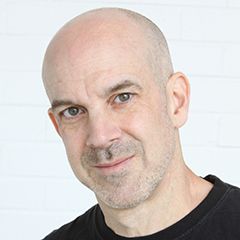
The use of telemedicine and telehealth was not new. They have benefited many communities with limited access to medical care. However, during COVID-19, the use of such services has gained fresh momentum. And suddenly it was standard operating procedure everywhere, from your local GP to complex global monitoring. Innovative solutions have helped to address the challenge of person-to-person consultations and grant access to care services.
- Telemedicine involves online clinical visits between doctors and patients, while telehealth includes a wider range of services, such as health education, public health programs, and remote patient monitoring through health apps.
- The pandemic accelerated telehealth adoption; however, the expiration of temporary pandemic waivers in the US could reverse these gains without congressional action.
- While the US faces potential setbacks due to expiring emergency provisions, European countries like the Netherlands and Norway are successfully integrating telemedicine into existing healthcare frameworks.
Telemedicine vs telehealth: a brief overview
The words ‘telemedicine’ and ‘telehealth’ are often used interchangeably, but this is a common misconception. Let’s take a closer look at each of these terms and define the difference between them.
What is telemedicine?
Telemedicine refers to the use of telecommunications to provide remote healthcare services. Telemedicine software is often used for real-time two-way communication between the healthcare provider and another provider or patient.
- Provider-to-provider telemedicine: A range of providers, such as physicians and licensed clinical social workers, leverage electronic communications to receive guidance and support, and/or to synchronise with other healthcare providers on case management.
- Client-to-provider telemedicine: This arrangement involves the provision of virtual health services to clients/patients. It can include specialist consultations, follow-up visits, medication management, transfer of medical data and other care services that can be delivered remotely via video and audio connections.
What is telehealth?
Telehealth is a broader term than telemedicine. It goes beyond the application of electronic and telecommunications technologies solely for the provision of remote clinical services. Telehealth also includes training, administrative meetings and medical education services, among other things. According to the Center for Connected Health Policy, there are four key components of telehealth: live video, store and forward, remote patient monitoring (RPM) and mobile health.
- Live video is also sometimes referred to as video consultations and conferencing because it encompasses real-time two-way interaction between parties via video communication tools. Healthcare practitioners examining a patient or conducting training sessions for viewers in different locations over a live video tool are prime examples of this telemedicine service modality.
- Store and forward includes exchanging medical data, such as texts, pre-recorded videos and X-rays, primary between patients and medical professionals or between clinicians. Such data records are stored before being sent via secure electronic communications. As a result, this type of telemedicine service does not require real-time interaction between the parties. An example is a patient taking a picture of their skin condition and sending it to their doctor for examination.
- RPM enables remote monitoring (whether in real time or not) of a patient’s health condition by gathering data (blood pressure, glucose levels or oxygen saturation) with the help of technological devices. Measurement devices can include digital stethoscopes, connected wearables (smartwatches and wristbands) and many other devices for measuring vital signs.
- Mobile health is characterised by the use of smartphones and tablets for transmitting health data.
The broader scope of telehealth also encompasses public health initiatives, such as remote health education campaigns and disease surveillance, which help improve health outcomes on a community or population level. Furthermore, telehealth supports continuing medical education for healthcare providers, ensuring they stay updated with the latest medical knowledge and guidelines. Administrative meetings and provider training conducted via telehealth platforms improve coordination and efficiency within healthcare organisations. The integration of these diverse services under telehealth highlights its potential to transform the healthcare ecosystem by making it more connected, efficient, and accessible.

Current state of telehealth around the world
The US system pivoted incredibly well during the pandemic. And the numbers show it. Over 12.6% of Medicare beneficiaries used a telehealth service in just the last quarter of 2023. Oh, massive. In 2020, 92% of patients received that care right from their homes. Those figures really show why telehealth is so vital, especially when you look at the projected physician shortage. According to the Association of American Medical Colleges, up to 86,000 doctors will be short by 2036. A crisis is approaching, and virtual care can be a part of the solution.
Telemedicine is a game-changer, but there's a catch: the temporary pandemic waivers have run out, and Congress really needs to step up. If they don't, as the American Hospital Association points out, we could end up taking the healthcare system backwards.
In Europe, the state of telemedicine is less about avoiding a regulatory cliff and more about integrating this tech into national health systems. In fact, 40 countries in the WHO European region have developed a telehealth strategy or incorporated telehealth within a broader digital health strategy.
Let's take the Netherlands, which relies on existing frameworks, medical treatment acts, and GDPR for data protection. So, they treat telemedicine as another way to deliver care, with no special restrictions; it is simply folded into existing rules, such as the Dutch Medical Device Act, Medical Devices Regulations, Medical Devices Decree, and the Dutch Medicines Act.
And Norway seems to be pushing ahead practically. They've been big in teleradiology for decades. And in 2023, they legalised using e-consultations for sick leave certificates. Moreover, they are integrating AI for image analysis to enhance diagnostic accuracy.
Telemedicine vs telehealth: promising technology use cases
The development of digital technologies is an enabling component of remote health services. The top technologies powering telehealth and telemedicine solutions include:
- Artificial intelligence (AI): AI-driven technology can help in making recommendations for a patient’s treatment based on their medical history. It can also suggest the medication that should be taken based on personal monitoring and data analysis.
- Internet of Things (IoT): IoT devices grant easy access to data from medical devices. IoT wearables provide round-the-clock monitoring that can help to better manage a patient’s health and track the effectiveness of their treatment.
- AR/VR: Immersive reality can help inexperienced specialists to improve their practical skills. Moreover, with VR software capabilities to detach a patient from the usual environment, it can create a therapeutic physical space and help to enhance the quality of mental health care.
Conclusions
The main difference between telemedicine and telehealth lies in the scope of medical services that are offered via telecommunications. Telemedicine refers only to clinical services and exclusively focuses on direct patient care. Beyond clinical services, telehealth also deals with a wider range of educational, administrative and non-clinical healthcare activities.
Choose a technology partner that can check and improve your business's technological readiness and establish data privacy and cybersecurity solutions.

FAQs
Telemedicine refers specifically to the use of telecommunications technologies to provide remote clinical services, enabling patients to receive medical care without needing an in-person visit.
Telemedicine focuses exclusively on remote clinical services for patient care, while telehealth encompasses a broader scope, including remote non-clinical services such as provider training, continuing medical education, and administrative meetings.
Telemedicine offers convenience, improved access to health care services, especially in rural areas, reduced costs, better management of chronic diseases like diabetes and high blood pressure, and the ability to receive second opinions and prescription refills without visiting a doctor's office.
Typically, telemedicine requires access to electronic information and communications technologies such as smartphones, tablets, or computers with internet connectivity, along with secure platforms for virtual visits.
Yes, telemedicine helps reduce exposure to infectious diseases by allowing sick patients to consult healthcare providers remotely, minimising the risk of spreading infections in clinics or hospitals.
Telemedicine services can be provided by a variety of healthcare professionals, including primary care physicians, nurse practitioners, specialists, and other licensed practitioners.
Telemedicine complements traditional healthcare but does not replace in-person visits when physical examinations or procedures are necessary.
Related Insights







The breadth of knowledge and understanding that ELEKS has within its walls allows us to leverage that expertise to make superior deliverables for our customers. When you work with ELEKS, you are working with the top 1% of the aptitude and engineering excellence of the whole country.

Right from the start, we really liked ELEKS’ commitment and engagement. They came to us with their best people to try to understand our context, our business idea, and developed the first prototype with us. They were very professional and very customer oriented. I think, without ELEKS it probably would not have been possible to have such a successful product in such a short period of time.

ELEKS has been involved in the development of a number of our consumer-facing websites and mobile applications that allow our customers to easily track their shipments, get the information they need as well as stay in touch with us. We’ve appreciated the level of ELEKS’ expertise, responsiveness and attention to details.

